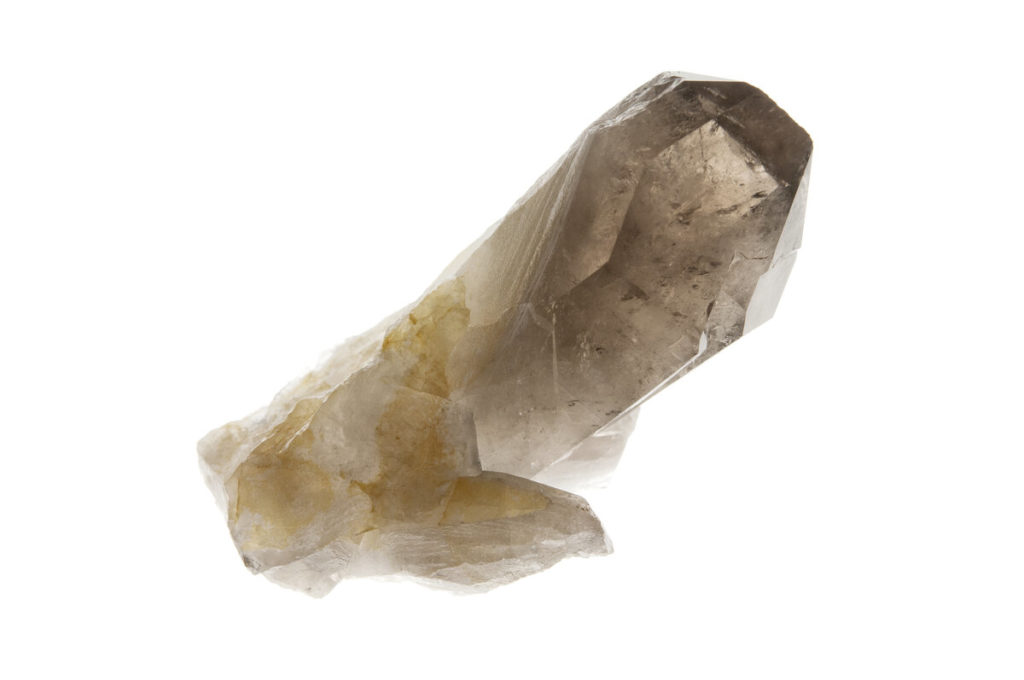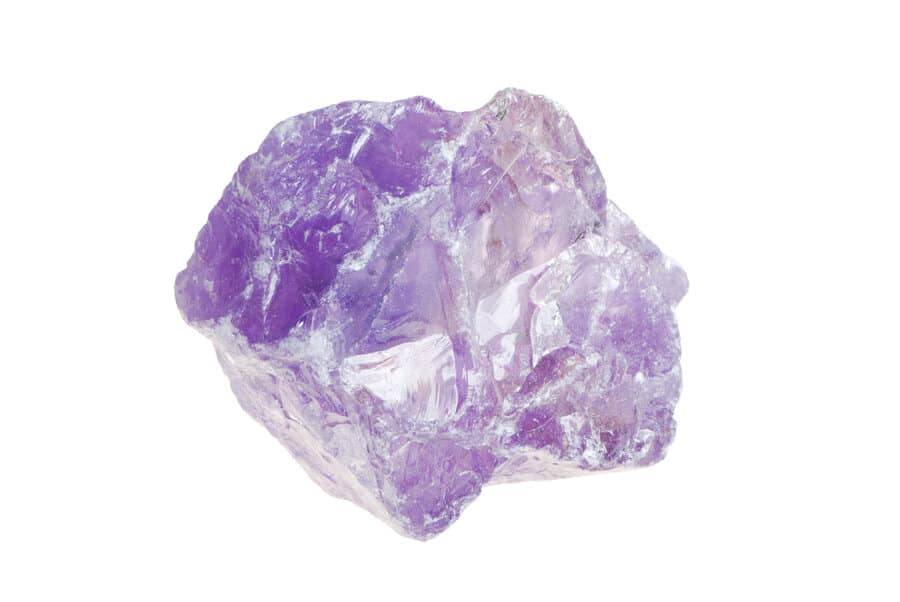If you’re hoping to do some rockhounding in New Hampshire, one of the first questions you’ve probably asked yourself is where to look. You’ll be delighted to learn that there are plenty of places to search for interesting rocks and minerals in New Hampshire and quite a nice variety of specimens to be found.
The surface geology of New Hampshire is largely ancient mountains and hills made up of gemstone-laden pegmatites. Relatively recent glacial activity stripped away younger rock layers to expose the bedrock beneath, making New Hampshire prime territory for gemstone and mineral collecting.
While there is plenty of potential here for rockhounds, you still need to have a good idea of where to look and what you can find there. Each location will have different rocks and minerals, which means you’ll probably never run out of fun places to search.
The best places to rockhound in New Hampshire are outcrops on hillsides and mountain ridges where pegmatite minerals are exposed. The Moat Mountain site is popular with collectors, as are old quarries and mines. Gold panning in streams and rivers is particularly fruitful in the northern part of the state.
| State Symbols | |
|---|---|
| State Mineral | Beryl |
| State Rock | Granite |
| State Gemstone | Smoky Quartz |
| State Fossil | Mastodon |

I’ll dive deeper into the types of material you can find here and exactly where you can being your search, along with a handy map and some additional resources to help you along the way.
Rocks and Minerals Found in New Hampshire
New Hampshire is home to quite a wide variety of rocks and minerals and, as a result, there there is almost no limit to the number of interesting material rockhounds can find here.
The large variety of gemstones and minerals found in New Hampshire is almost entirely a result of the pegmatites that comprise a large portion of the surface geology. The ancient volcanic and metamorphic rocks have been worn down by recent glaciation and subsequent weathering from rivers and streams, exposing interesting gemstones and minerals for us to find.
These pegmatites are essentially volcanic intrusions with unusually large crystals and they make for the perfect source rock for collectors. In New Hampshire, they are typically made up of desirable crystals like amethyst, tourmaline, apatite, and quartz.
The most commonly found and collected rocks and minerals in New Hampshire are:
- Amethyst
- Quartz
- Apatite
- Gold
- Staurolite
- Topaz
- Fluorite
- Tourmaline
- Jasper
- Garnet

If you’ve already found a rock and you’re not sure what it is, I would highly recommend checking out my Practical Rock Identification System. This bundle of information includes a book, videos, and online tools. It is, simply put, the most comprehensive and easy-to-understand rock identification system you’ll find anywhere.
You can also read through my free rock identification guide and mineral identification guide which are filled with useful information and tools.
Where to Rockhound in New Hampshire
Important Disclaimer: I have not been to these locations myself, and I do not know if they are currently open for collecting. Use this resource as a guide to get you started. Follow posted signage and always get permission from the landowner to collect.
Through quite a bit of research and cross-referencing of available literature, I have compiled this list of some prospective locations in New Hampshire which I would recommend to people looking to do some rockhounding. These are mostly comprised of outcrops, old mining prospects, washes, streams, and historically known rock and mineral collecting sites. For additional reading, I’d highly recommend these books you can find on Amazon:
Please remember that rock collecting locations are constantly changing. Specimens may become depleted from other collectors, the location may have been built on or altered, locality information in literature may be inaccurate, and property ownership may have changed hands. Please note that I have not been to these locations. I have found records of these rockhounding sites over a variety of sources and offer these locations as a place to start searching. I cannot personally attest to the accuracy of the given locations or the quality of the material there.
Joining up with a local rockhounding club for a group trip can often get you access to otherwise off-limits locations like privately owned mines and quarries. There are several rockhounding clubs in New Hampshire so you can most likely find one you like nearby.
I have tried to take care not to list locations within National Park boundaries since collecting is illegal there, but please remember that it is up to you to make sure you have permission to collect wherever you are. Even if you are on land that is generally open for public use there may be privately owned mining claims inside those boundaries and you’ll need to get permission to collect on that location.
Though there are many locations listed here, this list is far from exhaustive. A location’s listing here is not a guarantee of accuracy. Be safe, never go underground, and make sure to get permission from the landowner to search for and collect specimens.
If you’re planning on heading to the field, make sure you have all the gear you’ll need! To get started, you can check out my recommended gear page which contains my full reviews for every Geologist’s favorite rock hammer and the best hiking backpack I’ve ever owned.
Many of the best rockhounding sites in New Hampshire are privately owned. Many are commercially operated mines and quarries, and gaining permission to collect on any of these properties is, as always, absolutely essential. Some are open to the public for collecting at select times of the week, often on weekends. I will have more information on how to check property ownership status later in this article.
New Hampshire Rockhounding Sites
New Hampshire is loaded with plenty of spots for rockhounds to spend some time collecting. Most of the best sites are on hillsides, rocky outcrops, old quarries, and the gravels of streams and rivers that cut through the countryside. These locations are almost always associated with the ancient pegmatites which make up a large portion of New Hampshire’s surface geology.
The U.S. Forest Service highlights a few mineral collecting sites in and around New Hampshire. The Moat Mountain collecting site will reward you for a short hike with the potential to find your own amethyst and smokey quartz specimens, and just across the state line into Maine you can find minerals like feldspar, amethyst, topaz, and quartz at the Deer Hill and Park Hill collecting sites. These locations are on USFS land and require a free permit in order to collect.
Tip: Check out my Complete Rockhounding Guide for tips on planning your rockhounding trip and getting the most out of your time in the field!
There are many known locations across New Hampshire where you can find interesting rocks and minerals on hillsides and mountains. At some of these sites like Victor Hedge, you can find nice specimens of minerals like amethyst and quartz crystals by digging in soils and gravels.
New Hampshire is also a very popular location for recreational gold panning, especially in streams in the northern part of the state. While you almost certainly won’t be turning a profit by prospecting for gold here, you can easily spend quite a bit of time finding gold flakes and pickers in streams all over the state.
There are countless old mines and quarries scattered across New Hampshire – far too many to list in their entirety here. These mines and the old dumps associated with them are typically great places to find interesting material to add to your collection but, as with all rockhounding sites, make sure to get permission from the land owner before searching there.
New Hampshire Rockhounding Laws & Regulations
One of the most common questions rockhounds have is whether or not they are allowed to collect at a certain location. It is the responsibility of each rockhound to obtain permission from a landowner to search and/or collect on a piece of property.
The ownership and status of land can and does change frequently, making it impossible to document accurate information for every location on this page. However, I have compiled a list of resources here so that you may investigate and obtain permission for any locations (found here or elsewhere) for yourself.
Public Land Resources
I have written entire articles which cover the rockhounding laws and regulations for nearly every type of public land you can think of. I encourage you to check them out if you are curious about the legalities of rock and mineral collecting.
- Rockhounding on Public Land: Laws and Regulations
- Can You Collect Rocks in State Parks? All 50 States Answered
To determine what type of public land a particular location is on, I would recommend starting with these maps from the New Hampshire Division of Forests and Lands.
Here are some additional resources to help you check on land ownership and mineral claims:
- US Forest Service Interactive Map
- BLM’s Mineral Land and Records System – to check for mineral claims
Private Land Resources
As with most states, each county in New Hampshire will have records of who owns each piece of property. You can also usually get the landowner’s name and address by visiting the county records office. I would probably start by doing a property records search and getting whatever contact information you can for the landowner.
Sources & Further Reading
The locations and information contained in this article are primarily derived from academic papers, online resources, and other outside sources. If you would like to read some of the source material for yourself I have listed them below. The majority of these locations are my interpretation of Robert Beste’s A Location Guide for Rock Hounds in the United States. Other sources include:
- mindat.com
- Mineral Resources Data System
- USFS Rockhounding in New Hampshire
- New Hampshire Geological Survey
- New Hampshire Department of Natural & Cultural Resources
- The Geology of New Hampshire, Part 3: Minerals and Mines, Meyers & Stewart
- New Hampshire Mineral Locality Index
This post is part of my State-By-State Rockhounding Guides series. Please check out more states for thousands of additional sites to go rockhounding!
